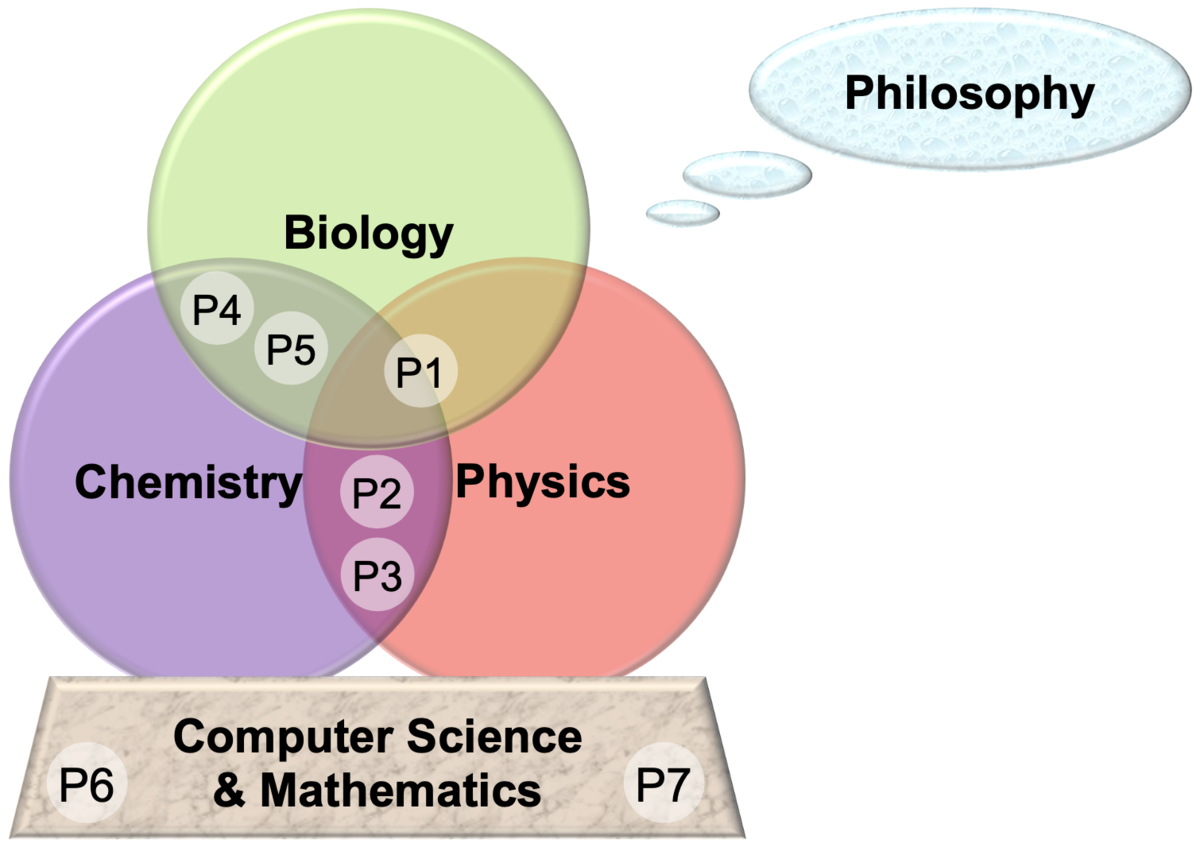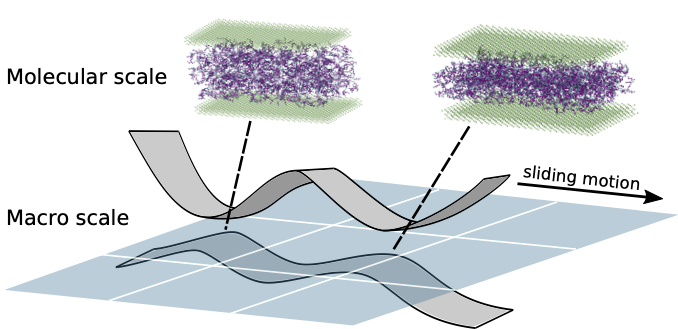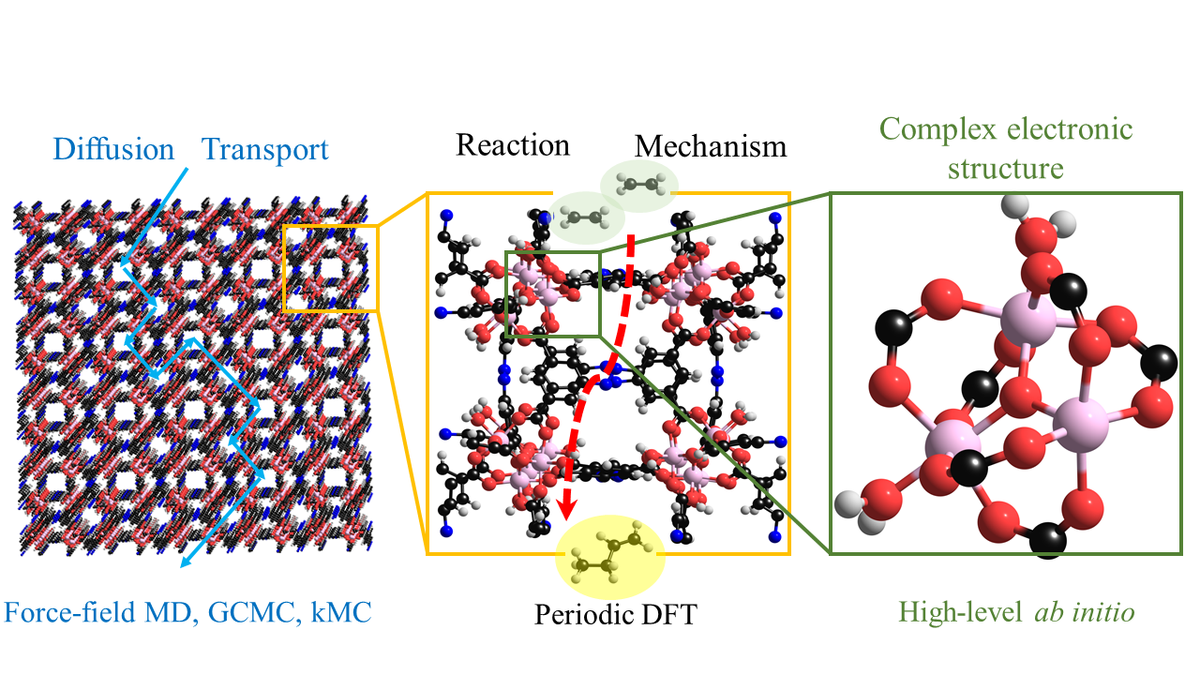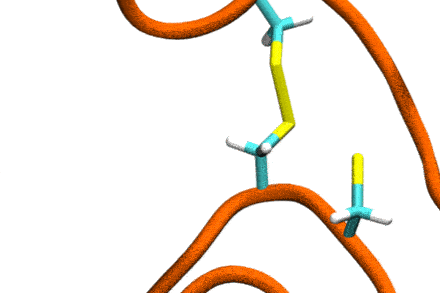About RTG 2450
In the recent years, a high concentration of theoretical groups has emerged at KIT (Karlsruhe) and HITS (Heidelberg), with research centered on multiscale simulations in biology, chemistry, physics, and materials sciences. These groups have developed complementary expertise in terms of computational methods and application areas, thereby systematically covering a large spectrum of interesting systems. The common theme of all problems addressed in the RTG is concerned with the foundations of simulation methods from atomistic to mesoscopic resolution. Chemical details matter, and the question is, how those affect macroscopic properties and vice versa, how macroscopic properties steer processes at the molecular level. These problems exhibit an inherent recursiveness, coupling processes on different time-and/or length-scales.
This recursive coupling is at the core of many innovative materials and biological questions. To address these questions, the RTG brings together a variety of methods starting from high-level quantum chemical approaches (QM), density functional theory (DFT), semi-empirical (SE) methods, molecular mechanics: (MM), coarse-grained(CG), mesoscopic and continuum methods. The various groups have combined these approaches already in many ways, for instance in standard Quantum Mechanics/Molecular Mechanics (QM/MM) coupling, which has developed into a robust workhorse for many applications. However, many efforts are concerned with model building beyond simple dual-level combinations, i.e. QM/MM/continuum mechanics, or mapping quantum chemistry to model Hamiltonians iteratively within a QM/MM framework, which are solved then in a time-domain.
Time dependent processes are described by a variety of means, starting from classical Molecular Dynamics (MD) simulations, Monte-Carlo (MC) methods, Minimum Energy Pathways (MEP) and reaction pathways, string methods (NEB etc.), non-adiabatic dynamics methods going beyond Born-Oppenheimer surfaces and enhanced sampling methods (e.g. REMD, Metadynamics, free-energy perturbation theory). These methods address spectroscopic properties like electronic excited states, vibrational spectra (normal modes, but also in the time domain), NMR couplings, reactive photochemical events, electron, proton or exciton transfer using Marcus theory and beyond, catalytic questions in condensed phase or surfaces, steered simulations using forces or computing mechanical properties like friction.
The environment at KIT and HITS (respectively University of Heidelberg), comprising both experimental or computational groups, has challenged the participating groups with questions, which are not or not easy to address applying standard methods at hands. Across the disciplines, often similar or related problems occur, which have to be addressed by efficiently combining methods and processes in computational workflows to capture the recursive nature of the problems envisioned.
Research groups from mathematics and computer science have been developing tools in the past, which turn out to be useful to meet the challenges described above. Therefore, we believe it to be fruitful to continue to integrate these methods in order to help in the further development of innovative multiscale models. One aim is to implement recursive computational workflows using tools and methods from Computer Science and novel integrators from Mathematics. The innovative combination of established methods in combination with enhanced sampling technologies will enable the participants to extend the range of presently accessible problems by recursively coupling methods on different time- and length-scales in adaptable multi-scale scientific workflows.
We designed the RTG training program to obtain an in-depth user-centered knowledge of the available simulation methods and their combined application in the context of different scientific disciplines to prepare the graduates for the complex simulation challenges of their scientific careers in academia or industry. The training also involves aspects of computer science and numerical mathematics, which will broaden the participants’ ability in methods development. Further, a deeper knowledge about simulation techniques for different materials will be obtained. To solve important questions in computational materials research successfully, one has to address issues related to the disciplinary organization of science, where problems are often chosen in a method-oriented way, in contrast to being problem-oriented. This often results only from a limited availability of and knowledge about methods and simulation techniques.
Consequently, problems are frequently tailored such, that they can be addressed by the methods mastered by the particular scientific work-group or doctoral researchers. The RTG training program tries to address these issues from the beginning by building interdisciplinary teams and teaching thinking in scale-bridging terms.
The images on this site are examples that show the variety of projects. Please feel free to explore our projects for more detailed information.

